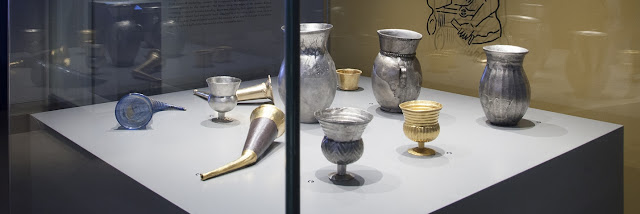 |
| Avar-period round fibula from Kölked (Hungarian National Museum) |
Connecting Early Medieval European Collections (CEMEC) is an EU-funded cooperation project that aims to create a collaborative network, and a cost-effective business model, between eight European museum collections and six technical partners. The goal is to examine both the connections between Early Medieval collection objects (300-1000 AD) and the objects’ regions of origin with the aid of innovative IT solutions.
Drawing on objects from participating museum collections, the project will produce ‘CROSSROADS’, a travelling exhibition focusing on connectivity and cultural exchange during the Early Middle Ages (300 -1000) in Europe. The ’CROSSROADS, Europe (300-1000)’ exhibition will focus on the Early Middle Ages in Europe. This period is often defined as ‘the Dark Ages’, however the exhibition will shed new light on this misconception, presenting the period as a time of exchange, in objects, people and ideas. The exhibition will open at the Allard Pierson Museum in Amsterdam (October 2017-March 2018). It will then move to the Byzantine and Christian Museum in Athens (April- September 2018) and end at the LVR Landesmuseum in Bonn (October 2018- April 2019).
The Hungarian National Museum is a partner in the project, and already staged a small display about Avars in the Early Medieval Carpathian Basin. The exhibitions Avars Revived was on view during March 2017.
You can read more about the CEMEC project on their website. On the website of the Hungarian National Museum, you can see one of the 3D models created in the framework of the project.
 |
| View of the exhibition Avars Revived (Photo: Hungarian National Museum, Budapest) |




